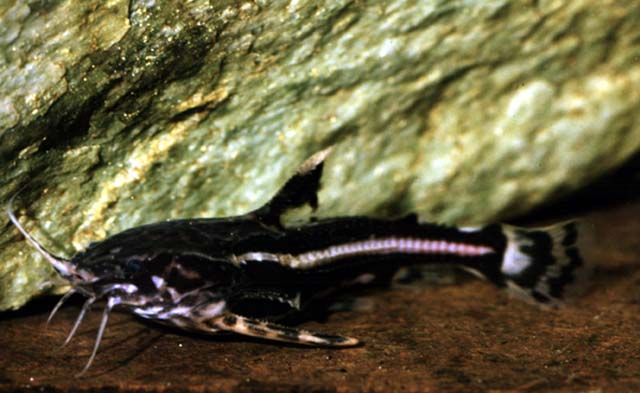| Doradidae (Thorny catfishes), subfamily: Astrodoradinae |
| 11.5 cm SL (male/unsexed) |
|
demersal; freshwater; pH range: 6 - 7.5; dH range: 4 - 25 |
| South America: Amazon River basin and coastal drainages of French Guiana, Guyana and Suriname. |
|
Dorsal spines (total): 1-1; Dorsal soft rays (total): 5-5; Anal soft rays: 10-11. The body is a little elongated, without scales, with one lateral range of bony plaque. The head is large and flattened. Mouth terminal, and has three pairs of barbels. Eyes are small (Ref. 35381). |
| Abundant in calm waters of swamps and mangroves (Ref. 27188). Omnivorous, feeds mainly on organic wastes. Searches for food by digging in the sediment. Active at night, lies hidden in the underwater roots and stocks during the day. Every basic unit of the sound they emit when they move their pectoral spine lasts 100-200 milliseconds with a frequency of 170-250 Hertz (Ref. 35381). Maximum length reported to reach 20 cm TL (Ref. 35381). |
|
Least Concern (LC); Date assessed: 16 July 2020 Ref. (130435)
|
| harmless |
|
Source and more info: www.fishbase.org. For personal, classroom, and other internal use only. Not for publication.

